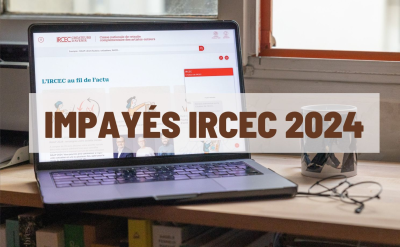News

Microentrepreneurs, how to declare your income
The micro-company is a sole proprietorship with streamlined management: the calculation and payment of your social security contributions and personal income tax are simplified.
As a microentrepreneur, you can choose between two tax regimes: the "classic" (common law) microenterprise regime, or the withholding tax on income (optional). Let's take a look.
1. common law tax system
Reminder:
This is the system that applies automatically, i.e. if you have not specified anything else.
You are then a sole trader subject to income tax in the category :
- industrial and commercial profits (micro-BIC) for a commercial, industrial or craft activity
- Non-commercial profits (micro-BNC) for a non-commercial activity (such as self-employment).
Your annual sales excluding VAT (sales actually received during the calendar year) must not exceed:
- €188,700 if your main business is the sale of goods
- €77,700 if you provide services.
If the business is set up during the year, the threshold is calculated on a pro rata basis according to the time the business has been in operation.
Your tax return
You don't need to file a "2035" professional income tax return.
All you need to do is indicate your sales on your supplementary income tax return (n°2042-C Pro) in the section entitled "professional industrial and commercial income / micro BIC (or micro BNC) regime".
The tax authorities then calculate your taxable profit themselves.
To do this, they apply a flat-rate deduction to the sales you declare, to take account of your professional expenses. This flat-rate deduction is as follows:
- 50% of sales for your BIC service activities
- 34% of sales for BNC activities.
The minimum is 305 euros.
It is this profit calculated in this way that will be subject to the progressive scale of income tax brackets, along with the other income of your tax household.
2. the payment in full discharge system
Reminder :
The "versement libératoire de l'impôt sur le revenu" system allows you to pay income tax and social security contributions at the same time.
Income tax is then paid as a percentage of sales
1.7% for companies providing services
2.2% for non-commercial profits.
In addition to these rates, there is a flat-rate payment in full discharge of social security contributions.
You can opt for this system if
- your reference tax income for the year N-2 is below a threshold that varies according to the number of shares in your family quotient
- your sales for N-1 (over a 12-month period) do not exceed the micro-business ceiling threshold
- you have opted for the micro-company scheme.
To choose this option, you must contact theUrssaf:
- when you declare your activity (or within three months) for immediate application
during the course of your business, by September 30 at the latest, for application the following year.
To find out more, read the article on the Urssaf website.
Your tax return
If you have opted for the prélèvement libératoire (withholding tax), you pay your income tax to Urssaf, which then passes it on to the tax authorities.
You enter your income as a microentrepreneur on the supplementary income tax return (n°2042-C Pro) in the "microentrepreneur who has opted for the withholding tax" box.
Your average tax rate will then be calculated taking into account your income as a microentrepreneur.
This income, having already been subject to the payment in full discharge, will not however be taxed twice, but will be taken into account in determining the reference tax income of your tax household and the tax rate that will apply to the other income of your tax household.






No comment
Log in to post comment. Log in.